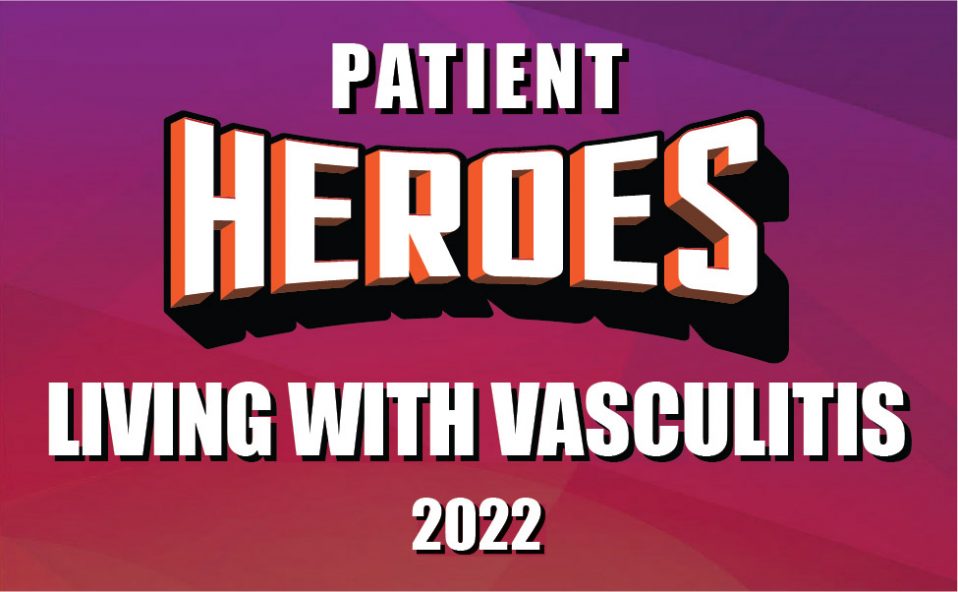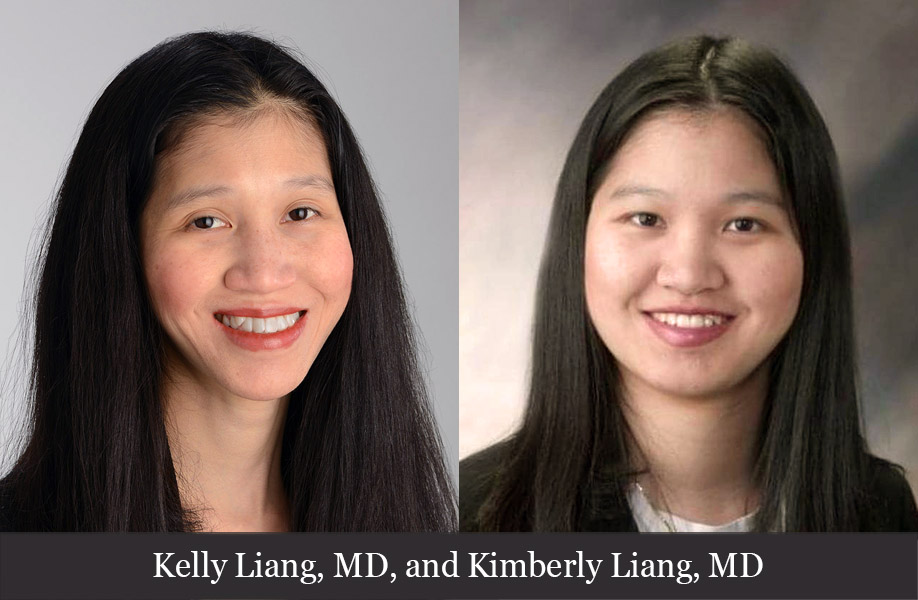Vasculitis Types
About Aortitis
Last Updated on February 5, 2024
Aortitis is a form of vasculitis—a family of rare disorders characterized by inflammation of the blood vessels, which can restrict blood flow and damage vital organs and tissues. Aortitis refers to inflammation of the aorta, which carries oxygenated blood from the heart to the rest of the body. It is seen in a variety of conditions including certain forms of systemic vasculitis, other inflammatory conditions, and infections. When aortitis occurs in isolation, without an underlying cause, it is called “isolated aortitis.” Aortitis is a serious condition that can result in many complications including aneurysm of the aorta, stroke, heart failure, aortic dissection, and kidney failure.

Aortitis is a form of vasculitis—a family of rare disorders characterized by inflammation of the blood vessels, which can restrict blood flow and damage vital organs and tissues. Aortitis refers to inflammation of the aorta, which carries oxygenated blood from the heart to the rest of the body. It is seen in a variety of conditions including certain forms of systemic vasculitis, other inflammatory conditions, and infections. When aortitis occurs in isolation, without an underlying cause, it is called “isolated aortitis.” Aortitis is a serious condition that can result in many complications including aneurysm of the aorta, stroke, heart failure, aortic dissection, and kidney failure.
Symptoms of aortitis include chest, back or abdominal pain, fever, fatigue, and weight loss. Symptoms can also be associated with the underlying disease such as headaches, arm and/or leg pain or weakness, joint pain, visual disturbances, and others. Some people with aortitis don’t have any symptoms. Aortic aneurysm, an abnormal bulge in the wall of the aorta that can rupture, and aortic dissection, which is tearing of the aorta, are potentially life-threatening complications of aortitis.
Treatment depends on whether the aortitis is caused by an infection or an underlying condition. Aortitis caused by infection is rare but can be life-threatening and must be treated promptly with antibiotics. Aortitis caused by other inflammatory conditions or unknown reasons is typically treated with medications that suppress the immune system, primarily glucocorticoids such as prednisone. In some patients, surgery is needed to repair aneurysms or bypass blocked arteries. Patients with aortitis require ongoing medical care including repeated imaging of the aorta and its main vessel branches.
The exact cause of aortitis is not fully understood. Vasculitis is classified as an autoimmune disorder—a disease that occurs when the body’s natural defense system mistakenly attacks healthy tissue.
The causes of aortic inflammation can be divided into three categories:
- Noninfectious: Caused by an underlying inflammatory disease. Some forms of vasculitis fall into this category including giant cell arteritis (GCA), Takayasu arteritis (TAK), Behçet’s syndrome, and Cogan’s syndrome. Other inflammatory disorders that can affect the aorta include systemic lupus erythematosus, rheumatoid arthritis, ankylosing spondylitis, sarcoidosis, and others.
- Infectious: Infections associated with aortitis include tuberculosis, salmonella, syphilis, Rocky Mountain spotted fever, herpes virus, hepatitis B and hepatitis C, among others.
- Isolated: The aorta becomes inflamed without any identifiable underlying cause. Other vessels are not affected.
Prevalence of aortitis is not well-documented. It can affect both men and women of any age. Isolated aortitis is very rare.
Symptoms of aortitis depend on the underlying condition causing the inflammation, and in early stages, there may be no symptoms at all. Sometimes aortic inflammation is discovered only at the time of surgery for an aneurysm.
General symptoms may include:
- Back pain
- Chest pain
- Abdominal pain
- Fever
- Fatigue
When the aortitis is associated with an underlying condition such as vasculitis or other rheumatic disorders, possible symptoms include:
- Headaches
- Tenderness of the scalp, especially the temples
- Pain, numbness and/or weakness of the arms and legs with use
- Shortness of breath
- Loss of vision/double vision
- Unexplained weight loss
- Dizziness/fainting
- Difficulty with coordination and balance
- Night sweats
- Joint and/or muscle pain
Inflammation of the aorta can lead to aortic aneurysm, stroke, and heart failure. In cases where there is an underlying disease or infection causing aortitis, complications can also be related to the specific cause.
In diagnosing aortitis, your doctor will consider several factors including a detailed medical history, physical examination, laboratory tests, and specialized imaging studies. A physical exam may reveal abnormal heart sounds, and/or sounds over the major arteries; abnormalities of blood pressure (discrepancy in blood pressure between the arms and legs); or reduced or absent pulse in the arms and/or legs.
Determining the cause of the aortitis is critically important because the treatment varies depending on the source of the inflammation. For example, immunosuppressive medications typically used to treat vasculitis are not appropriate for aortitis caused by infection, as they can aggravate an active infection. Diagnosis of isolated aortitis involves ruling out diseases or conditions that can cause aortic inflammation and present with similar symptoms. These include other forms of vasculitis (GCAs, TAK, Behçet’s syndrome, and others), systemic lupus erythematosus, rheumatoid arthritis, sarcoidosis, inflammatory bowel disease and infections such as tuberculosis, salmonella, syphilis, herpes virus, hepatitis B and C, and others.
Depending on organs affected, the following diagnostic tests may be ordered:
- Blood tests: To detect abnormal levels of antibodies and proteins in the blood, which can indicate inflammation or infection. People with inflammation typically have elevated levels of C-reactive protein (CRP) and erythrocyte sedimentation rate (ESR, or “sed rate”).
- Imaging tests: Echocardiogram, computed tomographic angiography (CTA), and magnetic resonance angiography (MRA) can reveal abnormalities of the aorta such as aneurysms or narrowing of the vessels. A dye-based angiography is rarely needed for diagnosis. A positron emission tomography scan (PET scan) is sometimes helpful to help establish diagnosis and determine if the disease may be active.
- Tissue biopsy: A biopsy involves surgical removal of tissue from an affected vessel, which is sent to a laboratory and analyzed for signs of inflammation. Biopsy of the aorta is not possible unless a surgical procedure is needed for treatment of an aortic aneurysm.
Treatment choices for aortitis depend on what is causing the inflammation. While infectious aortitis is rare, it can be life-threatening and requires prompt treatment with appropriate antibiotics, usually given intravenously.
In cases of isolated aortitis, and aortitis associated with systemic vasculitis or other autoimmune disorders, treatment is aimed at controlling inflammation, typically with glucocorticoids. Treatment may also require other immunosuppressive drugs such as methotrexate, azathioprine, mycophenolate mofetil, and cyclophosphamide. Biologic agents such as infliximab or rituximab may be prescribed. Biologic medications are complex proteins derived from living organisms. They target certain parts of the immune system to control inflammation.
Surgery is sometimes needed to repair an aneurysm, or to bypass blocked arteries.
The medications used to treat aortitis have potentially serious side effects such as lowering your body’s ability to fight infection, and potential bone loss (osteoporosis), among others. Therefore, it’s important to see your doctor for regular checkups. Medications may be prescribed to offset side effects. Infection prevention is also very important. Talk to your doctor about getting vaccines (e.g., flu shot, pneumonia and/or shingles vaccination), which can reduce your risk of infection.
Aortitis requires ongoing medical care and repeated imaging studies of the heart and aorta. Patients who have aortitis may experience relapse of their vasculitis symptoms, as most forms of vasculitis are chronic conditions. New or returning symptoms should be reported to a doctor as soon as possible. Regular doctor visits and ongoing monitoring of laboratory and imaging tests are important in detecting relapses early.
Effective treatment of aortitis may require the coordinated efforts and ongoing care of a team of medical providers and specialists. In addition to a primary care provider, aortitis patients may need to see the following specialists:
- Rheumatologist (joints, muscles, immune system)
- Infectious disease specialist
- Cardiologist (heart)
- Cardiovascular surgeon
- Ophthalmologist (eyes) or others as needed
The best way to manage your disease is to actively partner with your health care providers. Get to know the members of the health care team. It may be helpful to keep a health care journal to track your medications, symptoms, test results and notes from doctor appointments in one place. To get the most out of your doctor visits, make a list of questions beforehand and bring along a supportive friend or family member if necessary to provide a second set of ears and take notes.
Remember, it’s up to you to be your own advocate. If you have concerns with your treatment plan, speak up. Your doctor may be able to adjust your dosage or offer different treatment options. It is always your right to seek a second opinion.
Living with a chronic condition such as aortitis can be overwhelming at times. Fatigue, pain, emotional stress, and medication side effects can take a toll on your sense of well-being, affecting relationships, work, and other aspects of your daily life. Sharing your experience with family and friends, connecting with others through a support group, or talking with a mental health professional can help.
Aortitis is a serious condition. The outlook for patients with this condition depends on the cause of aortitis, and how quickly the disease is diagnosed and treated. Patients with aortitis may experience relapse of their vasculitis symptoms. Aortitis requires ongoing medical care and repeated imaging studies of the heart and aorta.
Aortitis Videos
VF Disease Insights: Aortitis Vasculitis



























































